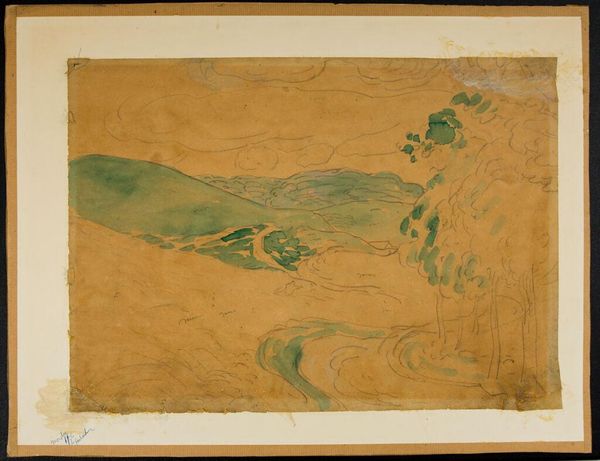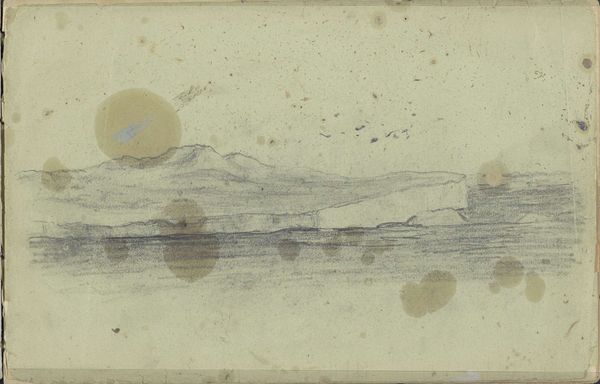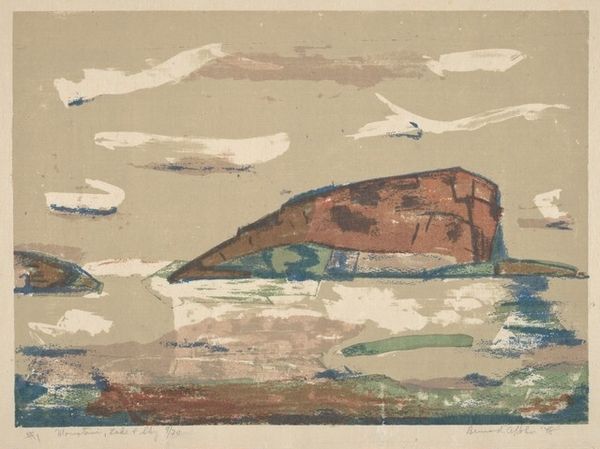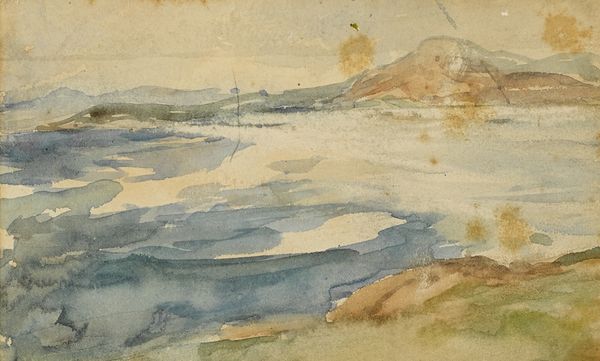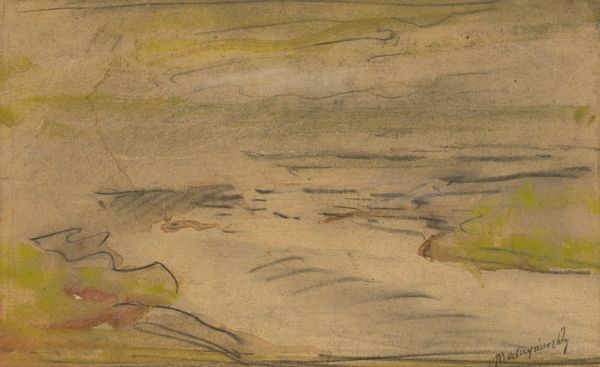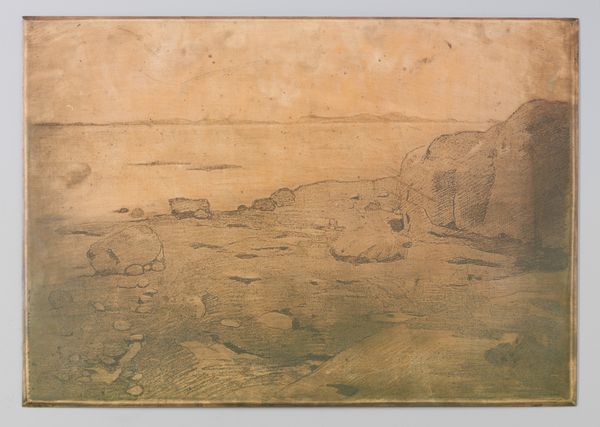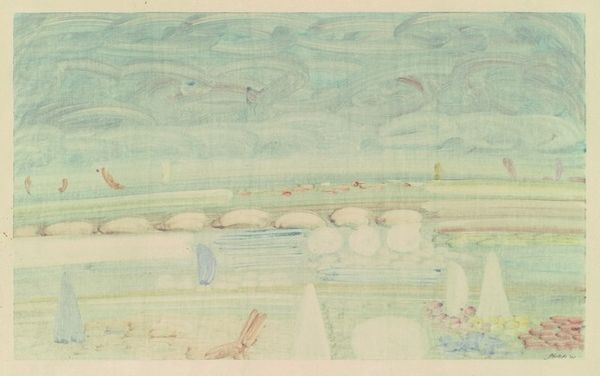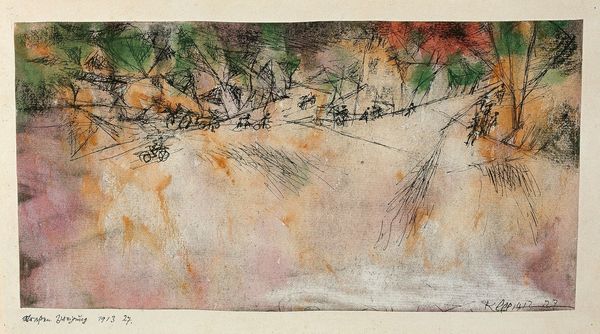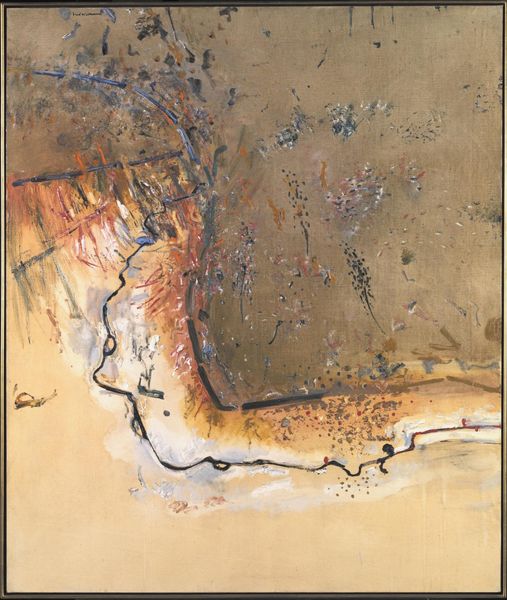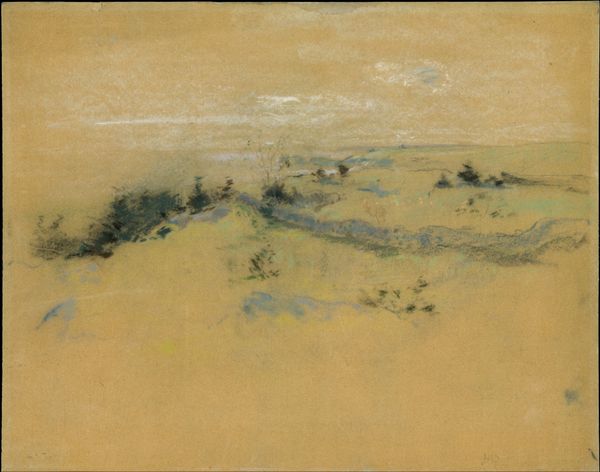![Tahitian Shore [verso] by Paul Gauguin](/_next/image?url=https%3A%2F%2Fd2w8kbdekdi1gv.cloudfront.net%2FeyJidWNrZXQiOiAiYXJ0ZXJhLWltYWdlcy1idWNrZXQiLCAia2V5IjogImFydHdvcmtzLzdmNmZkZWJlLTk2MTAtNGExNS05YjkwLWE0ZjJiZmZjODkwNy83ZjZmZGViZS05NjEwLTRhMTUtOWI5MC1hNGYyYmZmYzg5MDdfZnVsbC5qcGciLCAiZWRpdHMiOiB7InJlc2l6ZSI6IHsid2lkdGgiOiAxOTIwLCAiaGVpZ2h0IjogMTkyMCwgImZpdCI6ICJpbnNpZGUifX19&w=3840&q=75)
#
abstract painting
#
water colours
# print
#
possibly oil pastel
#
handmade artwork painting
#
fluid art
#
underpainting
#
painting painterly
#
watercolour bleed
#
watercolour illustration
#
watercolor
Dimensions: sheet: 33.2 x 51 cm (13 1/16 x 20 1/16 in.)
Copyright: National Gallery of Art: CC0 1.0
Curator: Looking at Paul Gauguin's "Tahitian Shore [verso]," circa 1900, I’m immediately struck by its ethereal quality. It feels like a dreamscape, rendered in muted earth tones. Editor: Indeed. And knowing Gauguin's complicated relationship with Tahiti adds a layer of complexity. This piece speaks to the idealization and perhaps also the exploitation inherent in his gaze upon the island and its people. What’s really interesting here is the process. It's labeled a print, maybe watercolor or oil pastel on paper... it really exemplifies a mixed-media approach, a hands-on quality that almost contradicts the exotic subject. Curator: I agree. You see the rapid strokes and layering, giving it this unfinished feeling, but intentional rawness. Was he striving for immediacy? Was this piece perhaps part of a broader exploration of depicting Tahiti, reflecting on the nature of representation itself in relation to colonized spaces and subjects? Editor: Absolutely. His choices were very deliberate. It forces you to consider the artist's hand and material constraints and resources. Did he have access to high-quality pigments, and what kind of paper did he use, given the era? These material decisions influenced the aesthetic and what could and couldn't be represented within the work. He didn’t present an accurate account of the islands, he created his version, a European one. Curator: The visible underpainting, the watercolour bleed... the composition seems quite simplistic, perhaps deliberately, as if Gauguin wished to present an idyllic paradise unspoiled by civilisation. Editor: Yet this notion of “paradise” was being bought and sold, romanticized to serve the European artistic community and an art market eager for something “new." And by calling it “Tahitian Shore,” it further cements this notion that places can belong to and be owned by people, transformed into an object through art, ripe for commercial consumption. Curator: I think understanding both the creation and reception of artworks allows us to see a piece beyond just its aesthetic value. Editor: Precisely. This watercolor on paper prompts us to consider Gauguin's practice within its historical context, the very institutions shaping the art we get to experience now. It helps demystify how those politics are materialised in a piece such as "Tahitian Shore [verso]".
Comments
No comments
Be the first to comment and join the conversation on the ultimate creative platform.
